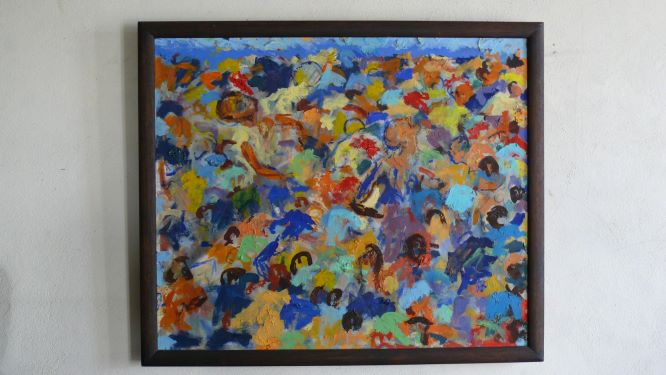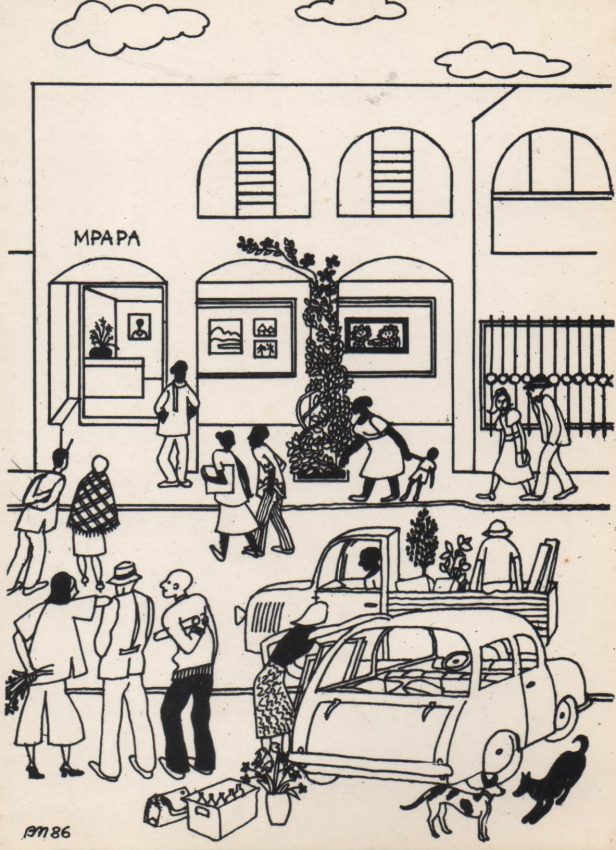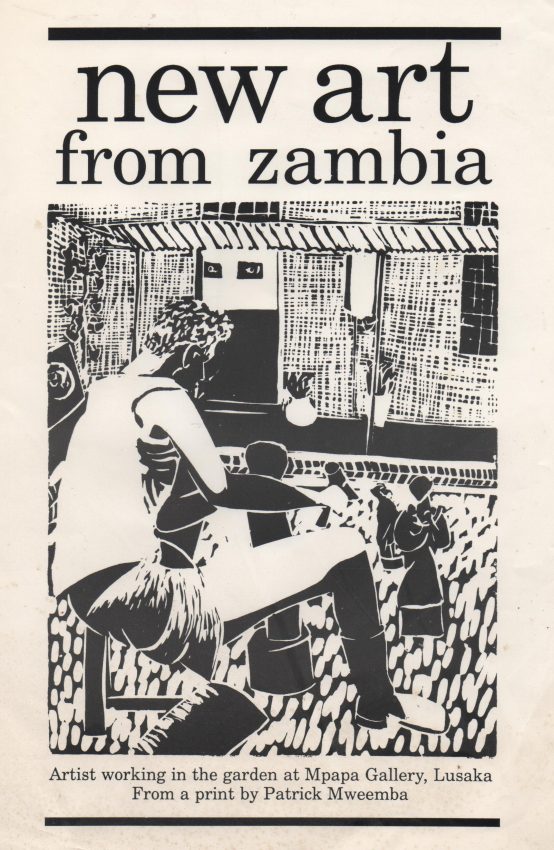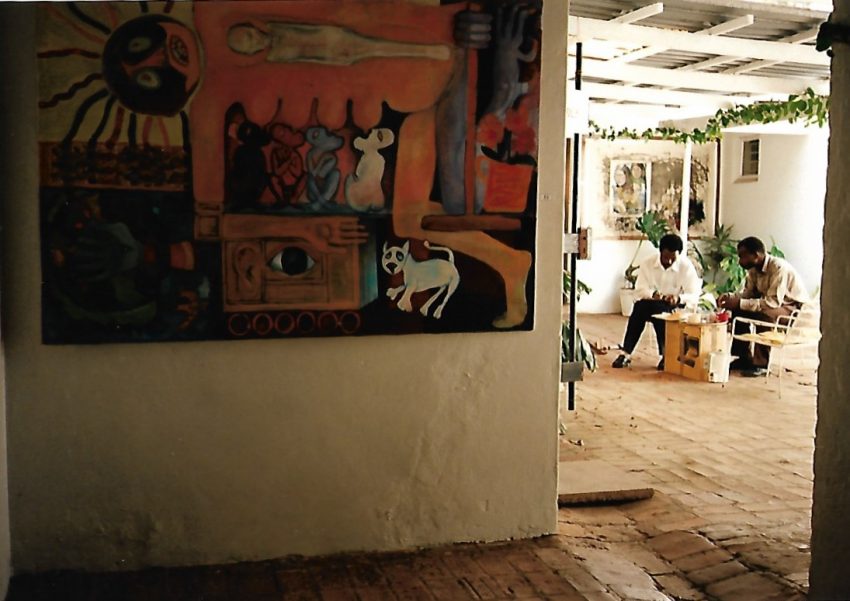
Black lives have always mattered – not just since the crisis of George Floyd’s murder. Everyone I worked with in Zambia had always felt the same about the fight against racism and it was fundamental to my own art and my work with Zambian artists. Black lives have mattered for centuries
Mpapa Gallery and the best art possible

In 1984 I was invited to manage Mpapa Gallery in Lusaka. Two idealists, Joan Pilcher and Heather Montgomerie had started it in 1978. They believed that Zambia should experience the best art possible and took the advice of Henry Tayali, a Zambian artist, and Barbara Masekela of the South African ANC, (African National Congress). Joan suggested that I ask two printmakers, Patrick Mweemba and Cynthia Zukas, the wife of Simon Zukas, a Zambian Freedom Fighter to join me. We were artists with shared political beliefs. We all worked as volunteers.
Mpapa Gallery and freedom of expression

Mpapa Gallery believed in the freedom of artistic expression and did not exhibit or sell art for commercial reasons. Henry Tayali opposed “tourist and airport art” that catered to European ideas of Africans. Barbara Masekela said it was patronising to suggest African artists needn’t aim for the highest standards possible. The artists who came to Mpapa Gallery told me that they wanted to improve their technical skills and learn about art, its context and content. I told them about intellectual property and copyright and building a portfolio. Joan showed them the importance of well-curated exhibitions. We wanted to build the reputation of Zambian artists and our biggest problem was growing the market for Zambian art when none had previously existed.
Mpapa Gallery and diversity

Mpapa Gallery operated for 18 years. During that time, it worked with and earned the respect of diverse cultural organisations from Britain, Italy, Norway, Cuba, Botswana, Zimbabwe and the USA because of its anti-colonial, pro-artist stance. It worked with the Triangle Trust to set up dynamic artist-run workshops and it advanced the careers of artists as unique and different as Godfrey Setti, Patrick, Mumba, Lutanda Mwamba, Patrick Mweemba, Style Kunda, David Chirwa, Friday Tembo, Eddie Mumba, Dabson Njobvu, Stephen Kappata and many others. After Mpapa closed, it would be many years before its work for Zambian artists would be replaced. If the true story of Mpapa Gallery is lost from history so too will the true worth of artists it exhibited. To find out more about these artists visit The Lechwe Trust website.
Mpapa Gallery, Zambia and the Cold War
Mpapa Gallery operated in extremely tough circumstances. Zambia is a landlocked country in the heart of Sub-Saharan Africa whose borders were created by empire-builders and colonists. All around it are nations damaged by both tribalism and wars for freedom. From Independence in 1964, Zambia, under Dr Kenneth Kaunda, stood against South African apartheid and Rhodesian racism. This was extraordinary for a country whose only resource was copper mines owned by South African companies. It had 100 graduates, one rail link and one tarred road and was in the middle of the Cold War. It was attacked and bombed by Rhodesia and suffered food and fuel shortages, social problems and a bad press outside its borders. It was the only country in the region where people could find refuge and live safely if they opposed apartheid and racism. I chose to go and live there with my mixed-race family in 1972 and that’s where I met people who believed in the freedom and equality of all people. Zambia was unique in attracting a committed and progressive community.
The Necessity of Creativity for Freedom
Mpapa Gallery gave me the opportunity to support what I believe is of greatest importance to any nation – its essential freedom of creativity. I gave a talk on The Necessity of Creativity at a conference in Zambian Legislation and Practice in relation to the Preservation of Cultural Property in Livingstone in1991 organised by Grazyna Zaucha.
The Black Lives Matter campaign is in the news now but it is part of a continuing process that’s been going on for a very long time. The desire to make the world a better place was not invented yesterday – it’s part of our shared human nature and hope that, as Martin Luther King Jr says – “The arc of the moral universe is long, but it bends toward justice.” Creative people and artists can make that happen.
,
,
4 Comments on “BLACK LIVES MATTER and Zambian art history”
As always, thank you Ruth !
Jon – I’m always so happy to know that you read my blogposts – it means a great deal to me – thank you!
Hello Ruth,
I just came across your about blog and the post above as I try to find some more information on Setti, especially his MA thesis.
Wonder if you may have access to it. I would like to make it part of our library collection for the Lusaka Contemporary Art Centre
Hi Victor,
I’ve emailed you and I’m impressed with your project of the Lusaka Contemporary Art Project and your wish to document artists and their work.
I will certainly see what I can find on Godfrey Setti to give you for your archive.
With best wishes, Ruth